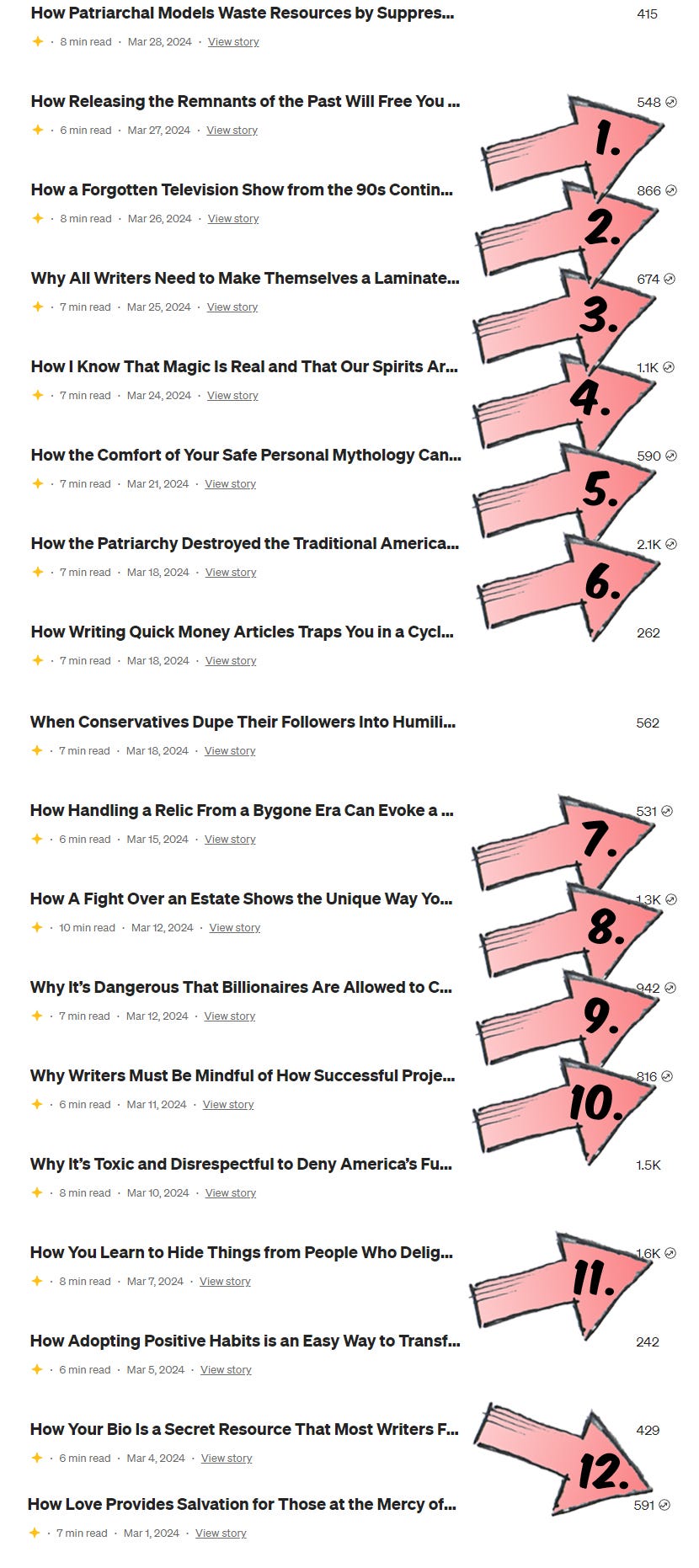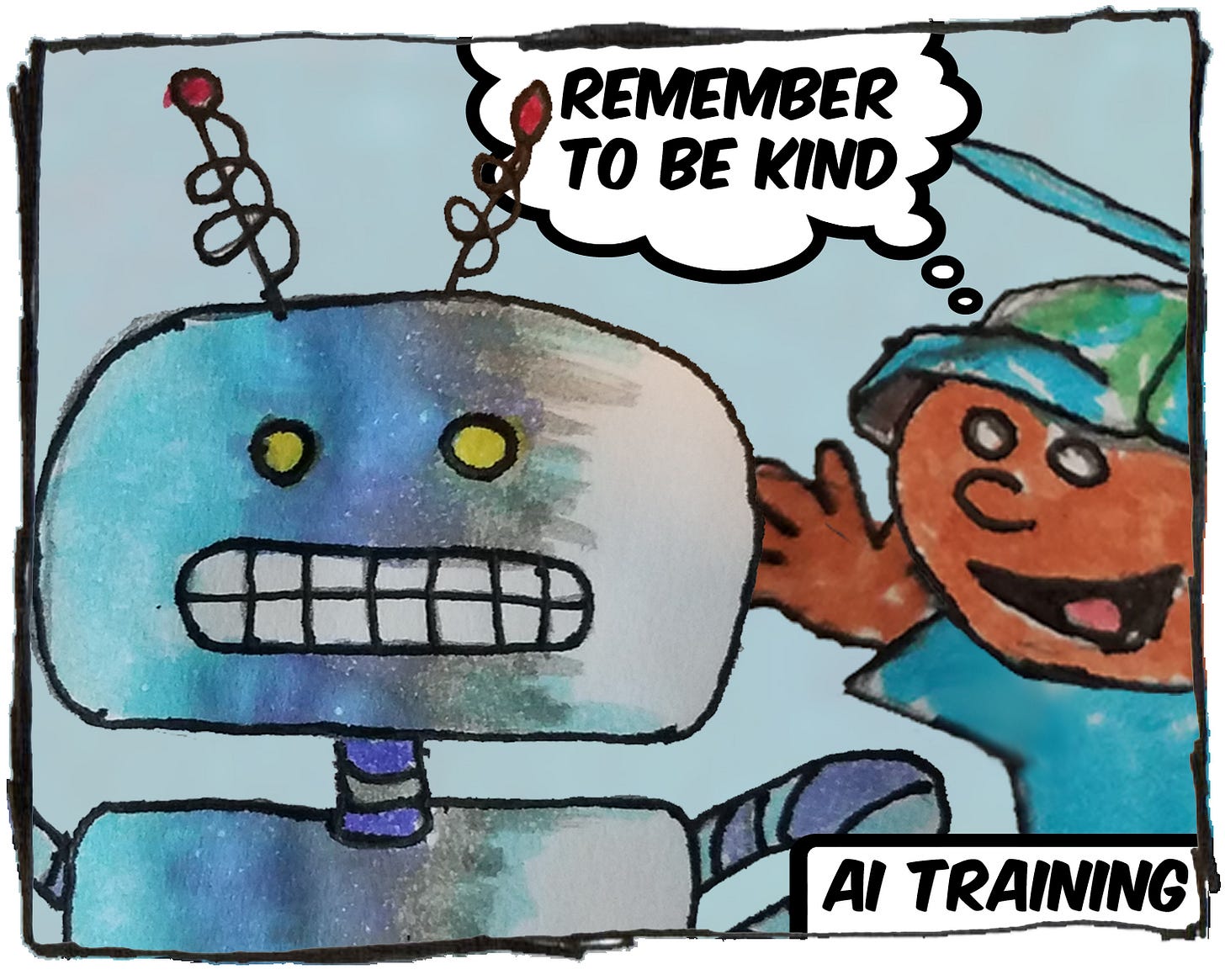Hi ho writers of the world wide web!
It’s another brilliant Saturday morning as I write this. I’ve just taken my family out to breakfast. It’s a great way to get the weekend started. My kids order belgian waffles with strawberries and cream. What’s not to love?
has invited me to stop by for an interview later this month so I can share my knowledge of Medium’s Boost program. I believe this interview will appear on her Online Writing club.As I prepare for this interview, it occurred to me that I should start thinking about the kind of information you all want to hear. It can become a little overwhelming, and I realize that my perspective is different than that of writers new to Medium, or writers who have experienced success on other platforms.
So, in this article I’ll get into what I know about Boost. Please brainstorm your questions and leave them in the comments so I can address them later. Note: everything expressed in this article is my opinion based on interpretations of how my articles have performed—I’m aware some of my conclusions could be completely wrong, so let’s discuss it.
March Boosts in Review
Here’s a graphic of all the articles I posted in March and the number of Boosts I received:
I had 12 of 18 stories Boosted for a rate of 66%. That’s good because a high success rate means that nominators are not going to be reluctant to nominate my stories.
As a Boost nominator, I am allowed to nominate 2 of my own stories, but I rarely do it. I’ve found that the self-nominations are unlikelty to be selected for Boost. The only one of my own stories that I nomiated in March was “How Patriarchal Models Waste Resources by Suppressing Talented People,” but it had already been reviewed and declined.
I was disappointed that one didn’t get in, but it’s important to remember that Boost is a HUMAN DRIVEN program. That’s the beauty of it. It means the decisions are made by actual human beings. A consequence of that initiative that we all have to accept is that human beings don’t always agree.
This is probably the most important aspect of the Boost program that writers have to understand and accept: If it feels inconsistent at times, that’s because it’s working! You can’t get so hung up on the one story that didn’t receive a Boost that you overlook the 12 stories that did.
Working with Boost requires a fluid mindset. Having said that, yes, I get frustrated when a deserving story is overlooked. But frustration is not a productive emotion for a writer, so I try to quickly turn that energy into something more beneficial.
Trends to notice
You can actually pull quite a bit of information out of the above graphic, particularly if you compare it to the other graphics I’ve shared in my other newsletters (good reason to subscribe I guess).
One of the things that I’ve noticed is that my Boost rate tends to go up after the 10th of the month. You’ll notice that by March 10th, I was 2/5 (40%).
I think this is because the nominator count resets on the 1st of the month. I suspect the curators are overwhelmed with submissions for the first week. So, if you’ve got something that you really, really think needs to be Boosted, it might be an effective tactic to wait until after the 10th to submit it (pure speculation here, but it’s a practice I follow).
I write almost everything with the intent that it will be “Boost worthy.” However, I didn’t really expect “Why It’s Toxic and Disrespectful to Deny America’s Fundamental Racism” to be Boosted. In my experience, the language and the content matter of that one does not have a high approval rate. I still write several stories like that per month because I think the message is important.
To be clear, I feel that Medium is doing excellent work in the field of anti-racism. There are wonderful writers who are also doing tremendous work. One of my favorites is Allison Wiltz. She’s turning into a thought leader and reading her articles is like working towards a doctorate in anti-racism.
I feel it might be useful to think of Boost as the “front page” of a newspaper.
For the front page you want important stories, but also stories that appeal to the widest possible audience. Yes, anti-racism articles are Boosted, but when I write an anti-racism article from the perspective of an enraged father who has just witnessed an attack upon a child, I can understand how that’s not necessarily for the front page. A story like that is more effective if you allow people to find it on their own.
That’s the kind of story that you tell to somebody you trust, not somebody you just met. See the difference? There’s no value judgment, it’s just a question of timing.
I also want to be clear that stories like that can and will find an audience. Non-Boosted stories can make as much money as Boosted stories, but it tends to happen over a few weeks rather than a few days.
The takeway here is that if you have a hard-hitting essay that you don’t think will be Boosted but which has an important message, you should schedule it for the first 10 days of the month.
Personal anecdotes and AI
Medium just sent out an email outlining its AI ban. This isn’t something that just came out of the blue, Boost has been part of this process for a long time. The idea of having human Boost nominators is to get around AI.
This is also why Boost nominators look for personal anecdotes. It’s because robots don’t have any experiences. On a side note, go and watch Blade Runner again. It’s scarry how accurately they predicted AI detection in that film. If you don’t remember, all the replicants (robots) have pre-installed memories that never happened, so the Blade Runners (murderer/detectives) just had to ask the replicants a series of questions that were designed to get specific emotional responses based on those fake memories.
Okay, that last paragraph got a little heavy and I’m running out of space, so let’s wrap this up. Scanning back over this article, I suspect I might have given you more questions than answers. That’s good. Write them and I’ll spend the next year answering them.
Seriously… do it.
Let me start with one, “You’re walking through the desert and you see a tortoise on its back…”









You rush over to the poor tortoise with your last gasping breath to save it, only to discover that it’s a helmet filled with water. You drink the water and put the shade giving helmet on your head. Compassion saved the day! Hooray.
Excellent, Walter. Thanks for sharing about the boost process.
Congratulations on your boosted stories, that's wonderful.